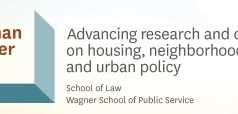Energized by Changes in Demographics and Consumer Demand, U.S. Suburbs are Positioned to Thrive in the Decades Ahead, Says New ULI Report
WASHINGTON – December 6, 2016 – (RealEstateRama) — Suburban housing markets across the United States are evolving rapidly and overall remain well-positioned to maintain their relevance in the years ahead as the places where most Americans live and work, even as many urban cores and downtown neighborhoods continue to attract new residents and businesses, according to a new publication from the Urban Land Institute (ULI).

The report, Housing in the Evolving American Suburb, provides a new analytic framework developed by RCLCO for the ULI Terwilliger Center for Housing that describes different kinds of suburbs based on the key factors that define and determine their housing markets. The report classifies and compares suburbs in the 50 largest metro areas in the U.S. – shown in a searchable online map – and assesses the key issues that will shape suburban residential demand and development in the years ahead.
Among the report’s key findings:
- America remains a largely suburban nation. In America’s 50 largest (and most urbanized) metropolitan areas, suburbs account for 79 percent of the population, 78 percent of the households, 32 percent of the land area—and, particularly noteworthy – 75 percent of the young adults aged 25 to 35.
- Suburban growth has driven recent metropolitan growth. From 2000 – 2015, suburban areas accounted for 91 percent of the population growth and 84 percent of the household growth in the top 50 metros.
- The large majority of Americans work in suburbs, although job growth has been more balanced recently. As of 2014, 67.5 percent of the employment in the 50 largest metros was in suburbs. Between 2005 and 2010, employment in suburban areas remained stagnant, while it increased by 8.2 percent in urban areas. But between 2010 and 2014, jobs increased by 9 percent in suburbs versus 6 percent in urban areas.
- Suburban residents overall have higher incomes. The median household income in the suburbs is $71,000, which is substantially higher than the median household income of $49,200 for urban areas.
- The suburbs are “young” compared to their regions overall. The suburbs are home to 85 percent of children aged 18 and younger, as well as 75 percent of young adults aged 25 to 34.
- American suburbs as a whole are racially and ethnically diverse. Seventy-six percent of the minority population lives in the suburbs.
- The regional variation in home values between suburbs and cities is substantial. On average, the median home value in urban areas is $365,000 compared to $305,000 in suburban areas. However, there are major variations by region – for instance, in the New York metro area, median home values are 28 percent higher in urban areas than the suburbs. But in the Heartland (middle section of the country) home values in the suburbs are significantly higher than those in urban areas.
The report identifies development trends, issues, and innovative product examples – too often overlooked — in five distinct types of suburbs within the 50 largest metro areas: “Established High-End,” “Stable Middle-Income,” “Economically Challenged,” “Greenfield Lifestyle,” and “Greenfield Value.” Key observations about the different types of suburbs include:
- Millennials need affordability, which attracts them to economically challenged and greenfield value suburbs, which have the lowest housing costs of the five types.
- Not all suburban growth is on the periphery. Stable middle-income, established high-end and economically challenged suburbs, which are closer in, account for 72 percent of suburban housing built between 2000 and 2015.
- Yet, greenfield areas exhibit stronger household growth. Between 2000 and 2015, greenfield lifestyle and greenfield value suburbs experienced the majority of household growth in metro areas.
- Greenfield areas have the highest homeownership rates and are more skewed toward detached housing.
- Auto dependence is uniformly high across all types of suburbs, even in those with better access to transit.
While the ascendancy of American suburbs starting after World War II came largely at the expense of cities, the recent revitalization of urban centers is in many cases complementary to the continued strength of their suburbs, said Terwilliger Center Executive Director Stockton Williams. “Suburban housing dynamics increasingly reflect some of the most profound issues shaping our society, including aging, immigration, economic mobility, and evolving consumer preferences,” he said. “As a result, suburbs will generate substantial residential development and redevelopment opportunities and challenges in the years ahead.”
”What’s happening in America’s urban places is very exciting and important, but this report pulls back the lens and presents a much broader view and a better framework for understanding where people actually live in this country,” said Adam Ducker, Managing Director at RCLCO. “The suburbs have evolved far beyond the monolithic bedroom community of our imagination, and this report is the first to deal with them fully, and on their own terms, in a long time.”
The report points out that even as urban revitalization continues, with some suburbs becoming more closely integrated with their city cores, a large number of suburban areas remain distinct enough to warrant analysis in their own right. ULI engaged RCLCO to conduct the analysis and generate actionable information for business leaders and local officials that could help shape the future of American suburbs.
Healthy regions and fully functioning housing markets require a range of housing choices for households of different backgrounds, means, desires, and stages of life, the report notes. Some of these options, the analysis suggests, will reflect preferences among a growing number of Americans for denser, more walkable communities. Other suburbs will serve a strong continuing demand for new single-family homes in more traditional auto-oriented areas, particularly to the extent they can be provided more affordably and near jobs. Still others will, by both choice and necessity, offer lower cost workforce housing – rental as well as for sale.
“The capacity of American suburbs to evolve with the economic and demographic transformations the country is experiencing will be one of the central real estate and land use issues of the 21st century,” Williams said.
About the Urban Land Institute
The Urban Land Institute is a nonprofit education and research institute supported by its members. Its mission is to provide leadership in the responsible use of land and in creating and sustaining thriving communities worldwide. Established in 1936, the institute has nearly 40,000 members worldwide representing all aspects of land use and development disciplines. For more information, please visit uli.org or follow us on Twitter, Facebook, LinkedIn, and Instagram.
contact Trish Riggs at 202-624-7086
by Robert Krueger















